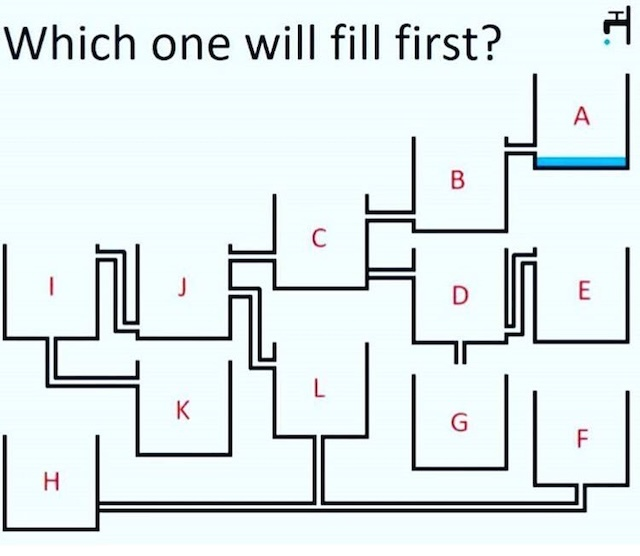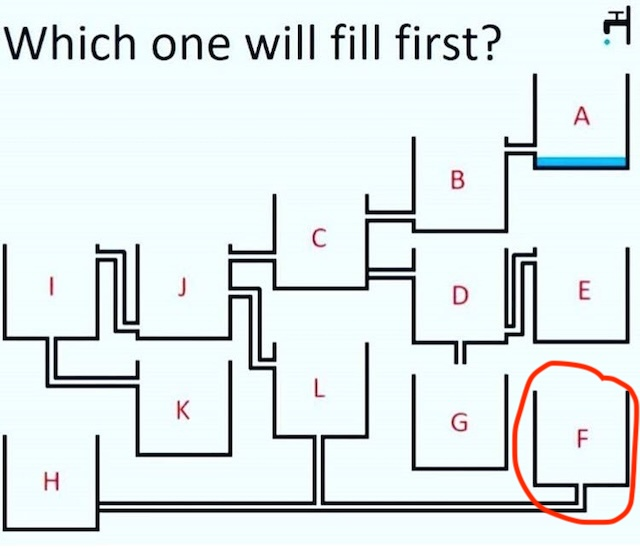Puzzles are a great way to challenge the mind, and today’s riddle is no different. The question seems simple: Which container will fill up first? But looks can be deceiving. Many people rush to answer without analyzing the details, leading to mistakes.
The trick is to carefully trace the water’s path through the pipes and identify any blockages or diversions. The key to solving this puzzle is understanding how water flows and which container it will reach first. Can you get it right?
Why Most People Get It Wrong

At first glance, this puzzle appears straightforward. Many assume that the container directly beneath the water source will fill first. However, this assumption often leads to the wrong answer.
Here are the most common mistakes people make:
- Overlooking blocked pipes that prevent water from flowing into certain containers.
- Ignoring the effect of gravity, which forces water to follow the lowest available path first.
- Jumping to conclusions without carefully examining all possible routes.
Now that we know the common errors, let’s break down the solution step by step.
Step-by-Step Breakdown: Tracing the Water Flow
Step 1: Identify the Water’s Starting Point
The water begins at container A, positioned at the top of the puzzle. From here, it will flow downward into any open pipes leading to the lower containers.
Step 2: Follow the Water’s Path
- The water flows from A into C.
- However, the opening beneath C is blocked, preventing further movement in that direction.
- Instead, the water moves toward J.
Step 3: Determine the Next Destination
From J, the water can go in two directions. One path leads to I, while the other leads to L.
Since L is positioned lower than I, water will always flow toward the lowest point first. This means the water moves into L before it has a chance to fill I.
Step 4: Finding the First Container to Fill
Once the water reaches L, it will continue flowing to the next lowest open space, which is container F.
Since F has no further exits or openings, it will be the first container to fill completely before any other containers receive water.
Final Answer: Container F Fills First

After tracing the water’s movement carefully, it is clear that container F will be the first to fill.
Did you get it right, or did you fall into one of the common traps? Many people assume the first container below the water source will fill first, but as this puzzle proves, small details can completely change the outcome.
What This Puzzle Teaches You
This puzzle is a great way to practice logical thinking and problem-solving skills. It forces you to slow down, analyze details, and think critically about how different elements interact.
Key takeaways from this challenge:
- Always check for blocked paths before assuming the water can flow in a certain direction.
- Gravity determines the flow, so the lowest open container fills first.
- Taking time to analyze the puzzle leads to better results than making quick guesses.
Join the Conversation

Did you figure out the answer on your first try? Share your thoughts in the comments and let us know how you approached the puzzle.
Puzzles like this are not just fun—they help improve focus, logic, and attention to detail. If you enjoyed this challenge, try solving more tricky riddles to sharpen your mind. Keep practicing, and happy puzzling!


